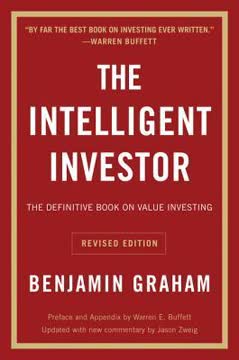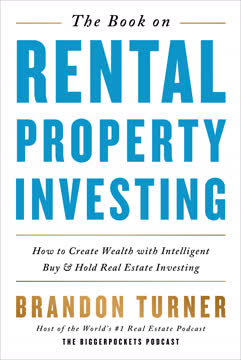Key Takeaways
1. Investing Education: The Foundation of Financial Success
Millions continue to blindly turn their money over to “experts” they do not know to manage it for them.
Empowerment through knowledge. True financial freedom comes from understanding how money works, not blindly trusting others. The book emphasizes that advice is not education; true education empowers you to make informed decisions. It's about transforming potential into real power, enabling you to do what you couldn't before.
Active learning is key. Don't be a passive recipient of information. Engage with the material, discuss it with others, and apply it to real-world scenarios. This active participation solidifies your understanding and helps you develop your own investment philosophy.
Continuous growth mindset. The market is constantly evolving, so learning should never stop. Embrace the role of a student, seeking out mentors and staying curious. This commitment to continuous learning is what separates successful investors from those who are left behind.
2. Asset Allocation: Diversify Intelligently
If you are a good leader and have a creative mind to solve problems, you might have what it takes to be a business owner.
Beyond stocks and bonds. The book advocates for a broader view of asset allocation, encompassing businesses, real estate, commodities, and paper assets. Each asset class has its own advantages and disadvantages, and the right mix depends on your individual goals and risk tolerance.
Strategic allocation. Diversification isn't just about spreading your money around; it's about strategically allocating your resources to different asset classes based on your understanding of their potential and risks. This requires a deep understanding of each asset class and how they interact with each other.
Personalized approach. There's no one-size-fits-all approach to asset allocation. What works for one person may not work for another. The key is to find a combination of assets that aligns with your strengths, goals, and circumstances.
3. Fundamental Analysis: Know What You Own
Fundamental analysis examines the strength of an entity.
Beyond the ticker symbol. Fundamental analysis is about understanding the underlying financial health of a company or entity. It involves examining financial statements, assessing management quality, and evaluating competitive advantages.
Financial statements are key. The financial statement is the heart and soul of fundamental analysis. By learning to read and interpret these statements, you can gain valuable insights into a company's profitability, solvency, and efficiency.
Value investing. Fundamental analysis helps you determine the intrinsic value of an asset, allowing you to identify opportunities where the market price is below its true worth. This approach, known as value investing, is a cornerstone of Warren Buffett's investment strategy.
4. Technical Analysis: Reading the Market's Story
Technicals are the story of supply and demand in pictures.
Beyond the numbers. Technical analysis is about understanding market trends and investor sentiment. It involves studying price charts, identifying patterns, and using technical indicators to predict future price movements.
Supply and demand. Technical analysis is based on the principle that prices are determined by the forces of supply and demand. By studying price charts, you can gain insights into the balance between buyers and sellers and identify potential trading opportunities.
Trend identification. One of the key goals of technical analysis is to identify trends. By understanding the direction of the market, you can position yourself to profit from those trends.
5. Cash Flow: The Ultimate Goal
Once we see the strength of a company (fundamentals), and the trend of the market (technicals), we then decide how we want to position ourselves to profit.
Beyond capital gains. The book emphasizes the importance of generating cash flow from your investments, rather than relying solely on capital gains. Cash flow provides a steady stream of income that can help you achieve financial independence.
Active income vs. passive income. The goal is to create passive income streams that exceed your expenses, freeing you from the need to work for money. This requires a shift in mindset from saving and accumulating assets to generating income from those assets.
Options strategies. The book explores various options strategies for generating cash flow, such as selling covered calls and cash-secured puts. These strategies allow you to profit from time decay and market volatility.
6. Risk Management: Control What You Can
Risk is the lack of control.
Beyond diversification. Risk management is about understanding and mitigating the potential downsides of investing. It involves identifying potential risks, assessing their impact, and implementing strategies to minimize losses.
Control what you can. While you can't control the market, you can control your risk exposure. This involves setting stop-loss orders, hedging your positions, and diversifying your portfolio.
Exit strategies. Having a well-defined exit strategy is crucial for managing risk. This involves setting clear price targets and stop-loss levels, and being prepared to exit a trade if it's not working out.
7. Sovereign Fundamentals: The Big Picture Matters
I spend a lot of my time focusing on sovereign fundamentals.
Beyond corporate balance sheets. The book emphasizes the importance of understanding the macroeconomic environment and the financial health of sovereign nations. Fiscal and monetary policies, demographics, and global events can all have a significant impact on investment returns.
Debt/GDP ratio. One key metric for assessing sovereign risk is the debt-to-GDP ratio. A high debt-to-GDP ratio can indicate that a country is struggling to manage its finances and may be at risk of default.
Policy and demographics. The book highlights the importance of understanding the interplay between government policies and demographic trends. These factors can provide valuable insights into the future direction of the economy and the markets.
8. The Education Continuum: A Journey, Not a Destination
As you read this book, you will move along the continuum.
Beyond awareness. The book introduces the Education Continuum, a framework for understanding your progress as an investor. It emphasizes the importance of moving beyond mere awareness to competency and proficiency.
Active participation. True learning requires active participation and application. Don't just passively read the book; engage with the material, discuss it with others, and apply it to real-world scenarios.
Mentorship and experience. The path to proficiency is often accelerated by mentorship and real-world experience. Seek out mentors who can guide you and provide valuable insights.
9. Policy Drives Financial Outcomes
Financial hard times have come and gone throughout history.
Beyond market fluctuations. The book stresses that government policies, both fiscal and monetary, are the primary drivers of financial outcomes. Understanding these policies is crucial for making informed investment decisions.
Fiscal policy. Fiscal policy refers to how a government chooses to spend its money and collect taxes. These decisions can have a significant impact on economic growth, inflation, and interest rates.
Monetary policy. Monetary policy refers to how a central bank manages the money supply and interest rates. These decisions can influence inflation, economic activity, and asset prices.
Last updated:
Review Summary
The Stock Market Cash Flow receives overwhelmingly positive reviews, with readers praising its simplicity and clarity in explaining complex financial concepts. Many find it an excellent introduction to stock market investing, particularly for beginners. Readers appreciate the book's practical examples, focus on generating cash flow, and emphasis on risk management. Some highlight its value in explaining options trading and technical analysis. While a few critics find it too basic for experienced investors, most reviewers commend the author's ability to break down complex topics into easily understandable concepts.
Similar Books










Download PDF
Download EPUB
.epub digital book format is ideal for reading ebooks on phones, tablets, and e-readers.




